As Farm Institute manager Julie Olson backed up her trailer full of pigs at Adams Farm in Athol, there was little indication she was outside of a slaughterhouse. The vista over the factory town is vast, animals patiently wait in their stalls in the large red barn and the smell of livestock is no different than on the plains of Katama.
The barn is quiet save one cow who voiced his agitation because he was alone in his pen, slaughterhouse manager Ed Maltby explained, but the United States Department of Agriculture (USDA) facility is designed to make sure the animals are as at ease as possible. The slaughterhouse burned down six years ago and animal welfare activist Temple Grandin designed the new facility free of charge.
The Vineyard farm’s eight pigs are unloaded, tagged and put into a pen until they’re slaughtered later that same day.
On this particular Monday morning, another cow is slowly pushed into a high-walled chute. The tall corrals minimize distractions for the animals so even the largest animals can’t even see past what’s in front of them. There are no chains, no clinking of metal or other disturbing sounds associated with slaughterhouses.
“The animals walk naturally up an [incline] so they know they can’t get out but they feel secure,” Mr. Maltby said, leaning against one of the pens, which are inspected daily. “They know it’s no hassle.” The animal is then brought into a holding room, killed with a stun gun and brought to the kill floor for evisceration.
This was the sixth time in the past year Ms. Olson, 25, travelled off-Island with animals for slaughter. By now Ms. Olson has grown accustomed to the rhythm of getting the animals ready for the trip – backing up the trailer to the holding pen in Katama the night before and getting the pigs in it with plenty of food and water for the three-hour drive to Athol.
The day began at 6 a.m. for Ms. Olson, but it wasn’t until leaving the pickup truck and trailer full of pigs in the hull below on the 7 a.m. ferry that she could enjoy her Mason jar of tea.
It’s a time consuming and costly process, but livestock raised on the Island is at a premium. With no slaughterhouse on the Vineyard, commercial and private farmers have to use off-Island facilities or do it themselves for private consumption.
The Farm Institute, an education based teaching farm, started a Community Supported Agriculture (CSA) meat program last winter and since then is having trouble keeping up with the demand for homegrown meat.
Preparing for a trip to the slaughterhouse begins months prior to a visit: Ms. Olson has to buy the piglets at least six months in advance (these pigs were bought from the Packer family in Vineyard Haven), book ferry reservations and a slaughterhouse reservation. She makes sure to use the trip off-Island to everyone’s advantage by letting other Vineyard farmers know she’s making the trip so they can bring animals or have Ms. Olson pick up processed meat.
Today, Ms. Olson is picking up lamb for the Allen Farm and grain for the Farm Institute in Taunton on the way back.
“I have to schedule all my slaughter dates for the year by November,” Ms. Olson said in between coaching the truck to reach the highway speed limit. She called Adams Farm in September and they were booked straight through the end of December. “You have to just guess and hope it’s right.”
It was a tight squeeze in the cab of the Chevy 2500 with a Gazette reporter and photographer tagging along for the day. When it came time to cross the Bourne Bridge, Ms. Olson had no shame taking up both lanes to accommodate the extra large load in the back.
The pickup truck is temperamental. It doesn’t like rain, snow or large hills. The hairpin turn up the steep hill to Adams proves to raise Ms. Olson’s heartbeat every time, but at least there’s no ice or a few tons of cows in the back on this visit.
After the pigs are unloaded Mr. Maltby leads us to the storefront delicatessen that sells Adams Farm meat, sandwiches and local dairy products. But just past the counter, the temperature begins to drop as you enter the cut room and a tinge of raw meat hangs in the air just as it does in a butcher shop.
There’s a butchering station for each kind of animal slaughtered at Adams – cow, pig, goat and sheep. The butchers work meticulously to cut the carcasses, preparing legs of lamb, short ribs, or putting large pieces of beef in the grinder. The butchers are given a cut sheet with specific requests from the animals’ owner and the remains are sent to a processing plant that grinds it up for dog food.
The cuts are then packaged for return to the farmer for personal consumption or USDA labeled for resale.
Before the carcasses are sent to the cut room, they hang in a walk-in freezer. The red and white marbleized animals hang on meat hooks for at least ten days, their girth impressive but the meat they produce is only about a third of the animal’s original weight.
It isn’t until you step outside the 38 degree freezer and into the room temperature corridor outside of the kill floor when the smell begins to flip the stomach of a first-time visitor. It’s quiet, there are no shrills of horror. But when you turn the corner and approach the doors that lead to the kill floor, you can see the black and white outline of a freshly slaughtered cow hanging upside down.
Adams allows farmers to observe the killing, and even though the Farm Institute’s pigs weren’t being slaughtered until later in the day, Ms. Olson walked onto the kill floor without flinching.
“The only time I have an emotional connection is when it’s an animal that wasn’t destined for slaughter,” Ms. Olson said. “You have to know when the animal is born that’s what it’s for. You can’t raise livestock unless you realize that’s why they’re here.
“Everyone has their own philosophy or thoughts about it, but I really like the idea of animals having this relationship with people and giving something back.”
The cows being slaughtered are at different points of evisceration, but it’s orderly. The cow hanging upside down is being skinned; its hide will be saved and sold to a leather dealer in Boston. It’s warm, humid and clean, and there’s no hiding what’s going on.
“We want to educate farmers and the consumers,” Mr. Maltby said. “We’re the last point of contact for the USDA.”
Ms. Olson loads up the Allen Farm lamb and the trip back to Woods Hole goes off without a hitch. It begins to rain again in Taunton when Ms. Olson picks up the grain and has to cover it with a large blue tarp. She balances coordinating a pickup for the lamb once she gets back to the Island while paying for her purchases (they settle on the Cronig’s parking lot in Vineyard Haven) and then it’s back in the truck for the last leg of the journey.
“It would be huge to have a place here where the farmers were involved with what’s happening there,” Ms. Olson said, almost daydreaming about the prospect of having a slaughterhouse on the Island. The Island Grown Initiative is in the midst of a feasibility study for just that dream.
“It’s just so hard to be connected with a place that’s so far away, especially when you’re rushing back to make a boat. It’s just like anything else — being small and local and being able to make that connection and know you’re getting what you paid for and that the animals are treated right.”

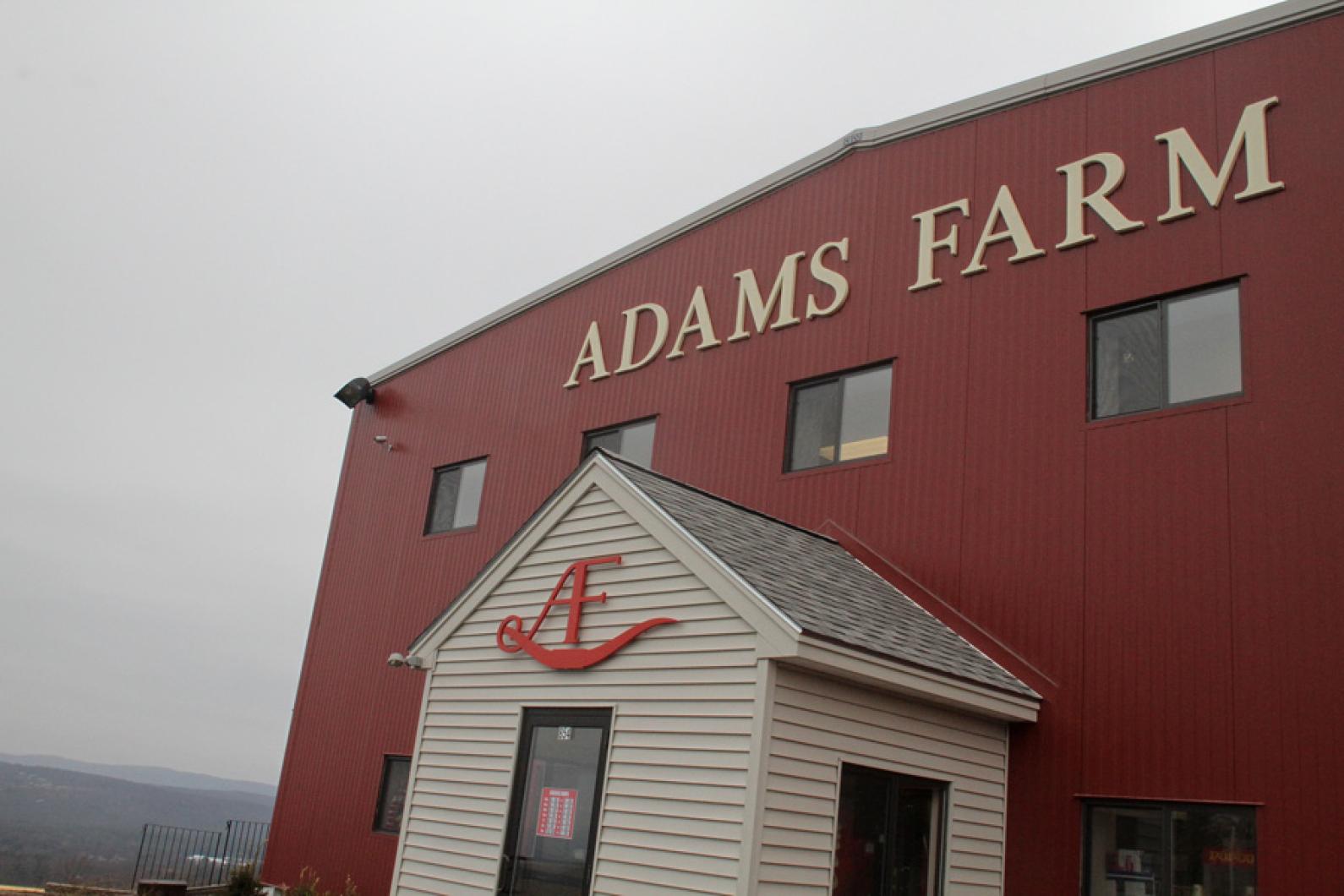
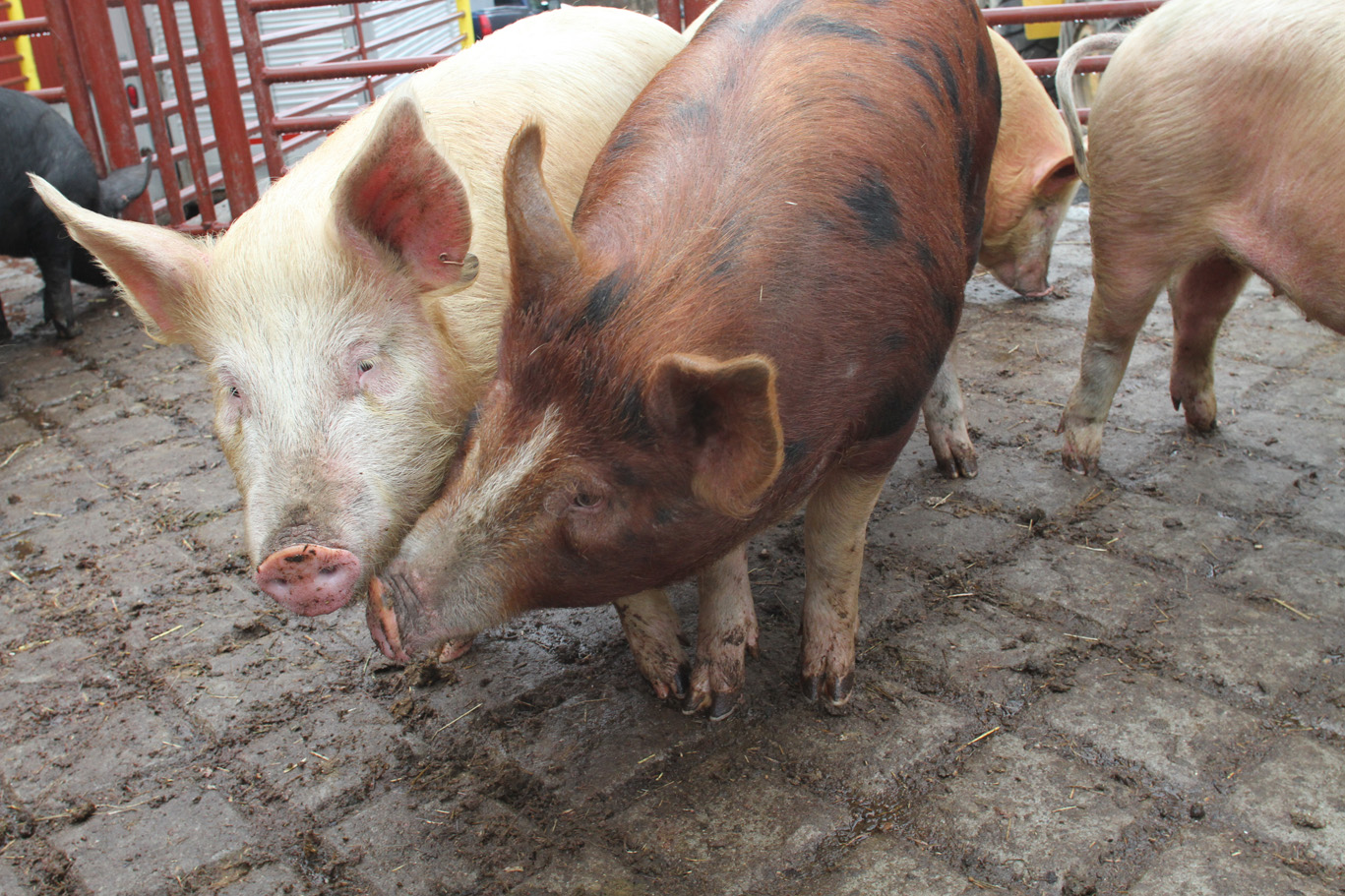
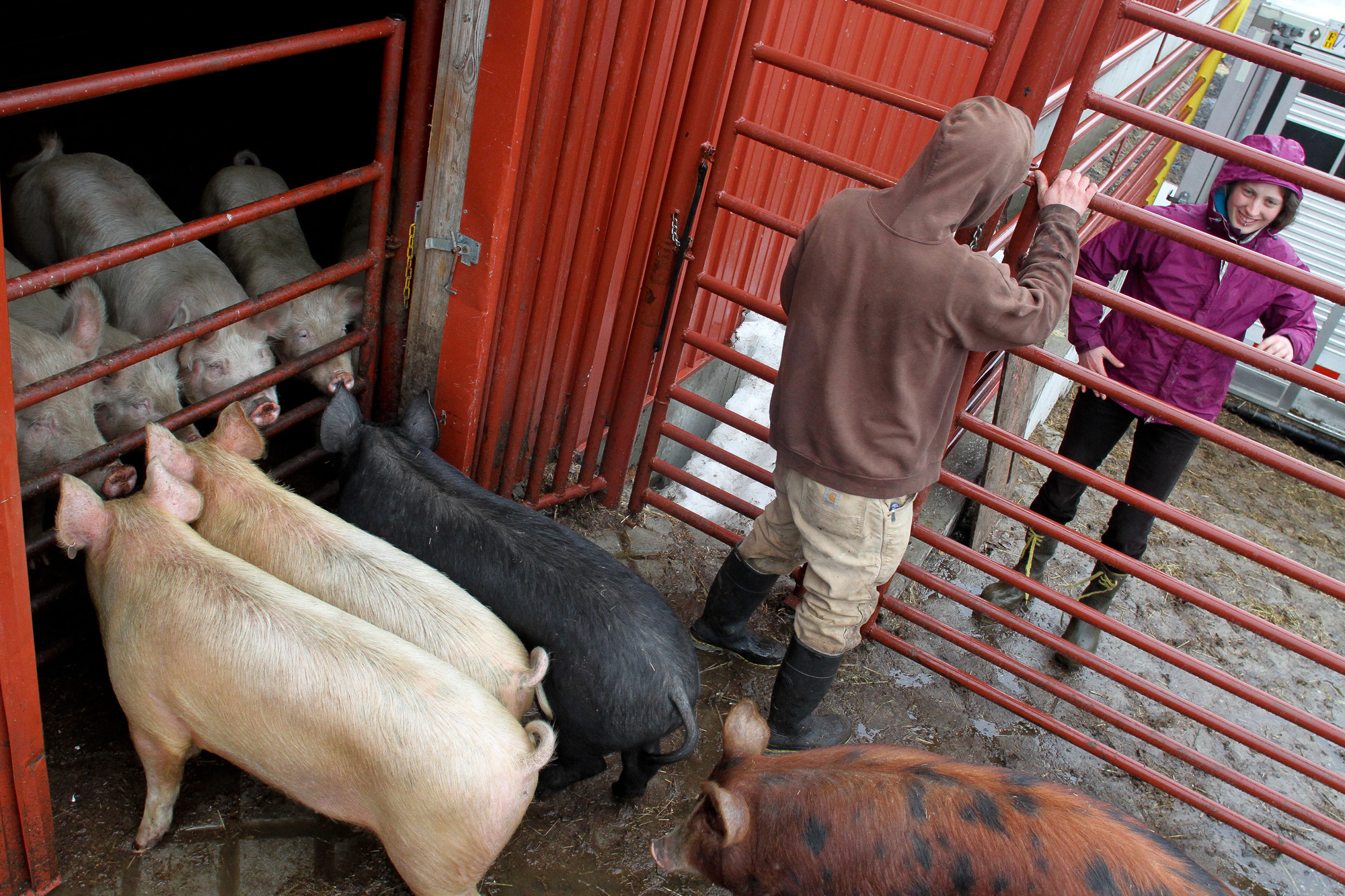
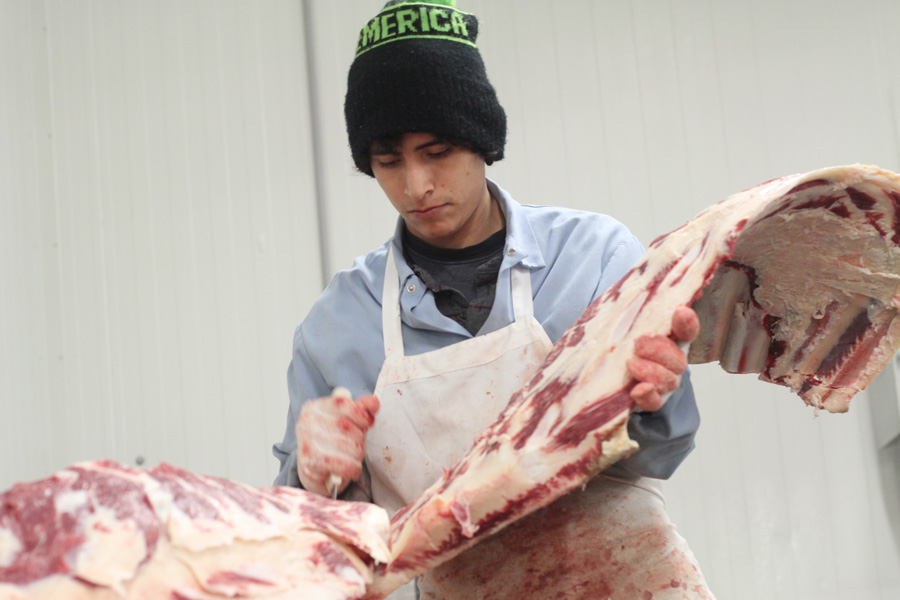
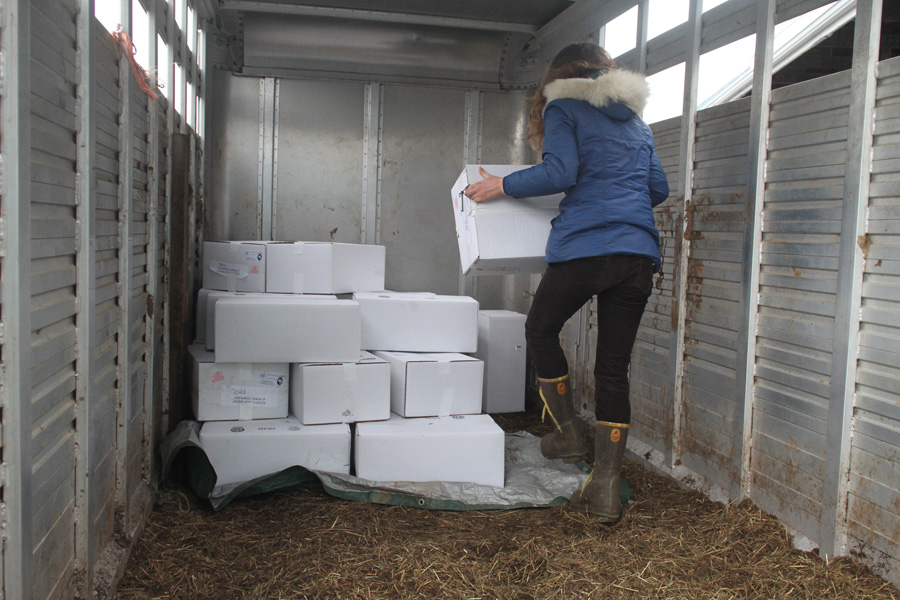




Comments
Comment policy »